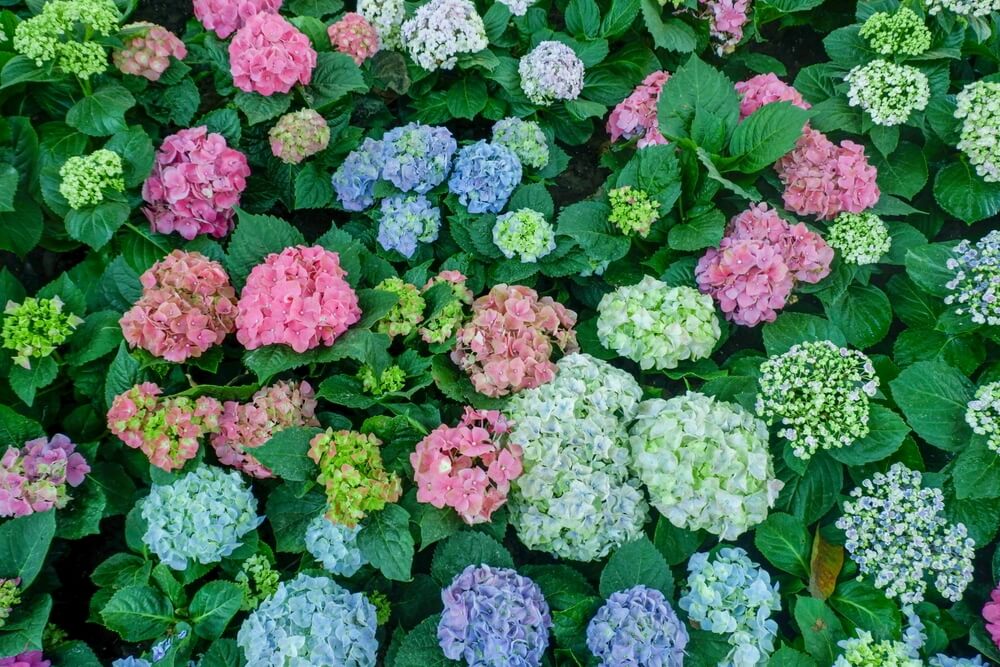Stop Buying Garden Plants – Grow These 21 Perennials From Scraps And Stems!
Welcome! This article contains affiliate links, meaning I get a commission if you decide to make a purchase through my links, at no extra cost to you.
Tired of dropping $20, $30, or even $50 per shrub at the plant nursery? Here’s a secret that seasoned homesteaders know. The best plants are often free! Whether it’s a knob of ginger, a stem of mint, or a cutting from your own overgrown lavender, you can multiply your garden without spending a dime. These 21 hardy perennials are champions of propagation. Once you master the art of cloning them, you’ll never look at “scraps” the same way again!
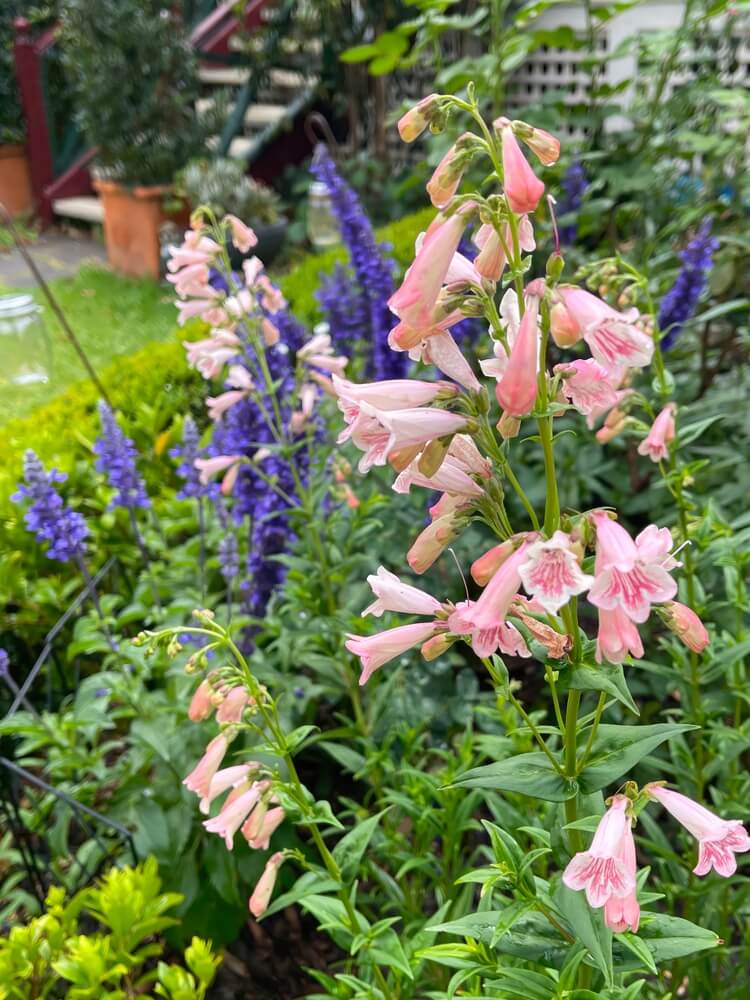
Sound exciting?
Then let’s clone some perennials – using nothing but stems and scraps!
Part I. The True Kitchen Scraps – Food Waste To Garden Crop
These 21 hardy perennials are champions of propagation. Once you master the art of cloning them, you’ll never look at “scraps” the same way again.
1. Garlic (Allium sativum)
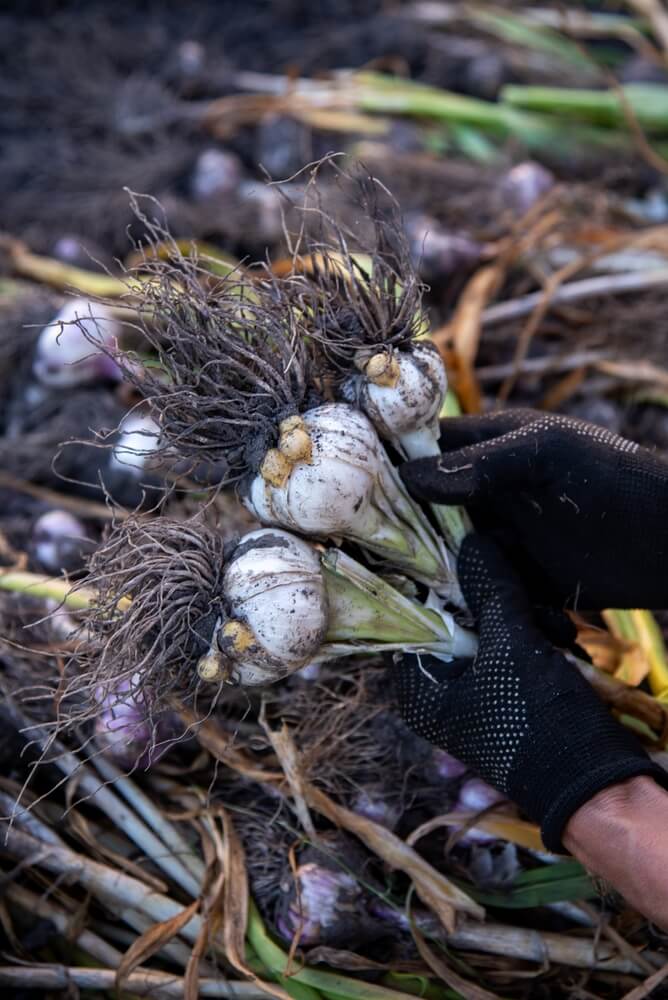
Plant a single clove and harvest a whole bulb. Garlic is the ultimate self-reliant crop: it wards off pests, stores for months, and costs pennies to propagate. Save your largest cloves from each harvest, and you’ll never need to repurchase garlic.
- USDA Growth Zones: 3 through 9.
- Cloning Tip: Plant individual cloves in fall, 2 inches deep with the pointed end up, in well-drained soil with full sun.
- Benefits: Essential culinary staple, natural pest deterrent, immune-boosting properties, and stores for 6 to 8 months.
The scapes (curly flower stems) that emerge in late spring are a delicacy all their own. Snip them before they straighten, and you’ll have pesto ingredients that taste like garlic butter, plus it redirects the plant’s energy back into bulb production.
2. Ginger (Zingiber officinale)
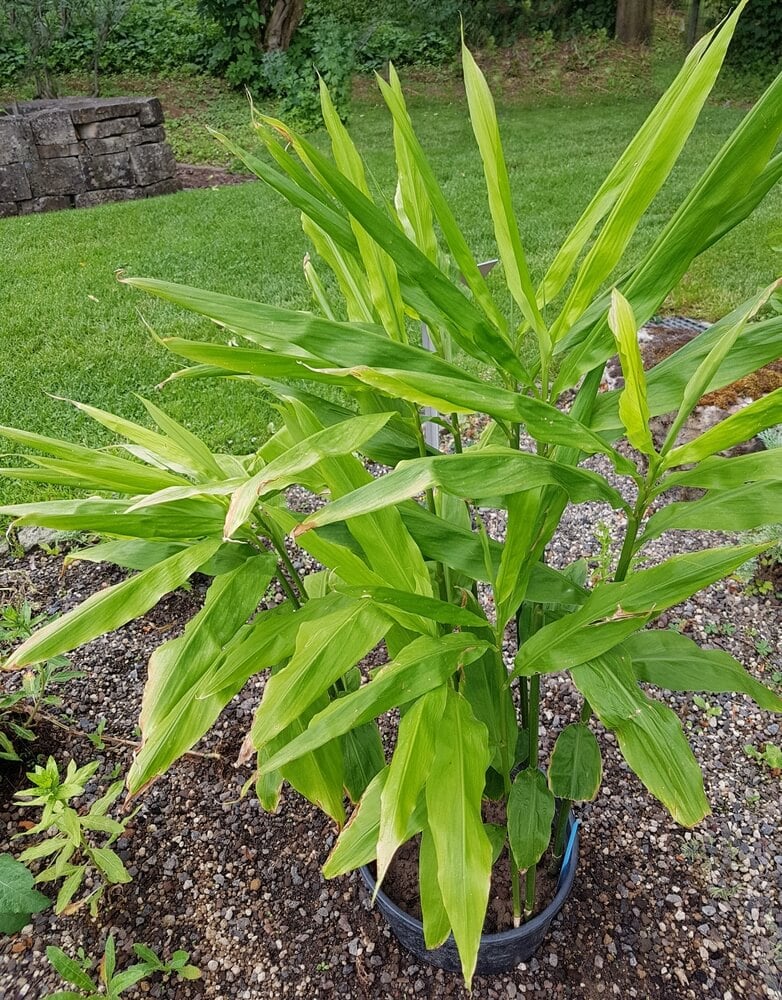
That sprouting ginger rhizome on your counter? It’s beginning to take root. Ginger thrives in warm climates or containers, and one piece can yield pounds of fresh root. Break it into sections with “eyes” and bury them just below the soil. Patience pays off in 8 to 10 months.
- USDA Growth Zones: 8 through 12 (or grow in containers elsewhere).
- Cloning Tip: Break rhizomes into 1 to 2-inch pieces with growth buds, plant them 2 inches deep in rich, moist soil, and keep the area warm.
- Benefits: Fresh ginger root for cooking and medicine, anti-inflammatory properties, and beautiful ornamental foliage.
There’s something deeply satisfying about digging up your own ginger after nearly a year of waiting. Their golden flesh is far more pungent and complex than anything you’ll find wrapped in plastic at the store.
3. Turmeric (Curcuma longa)
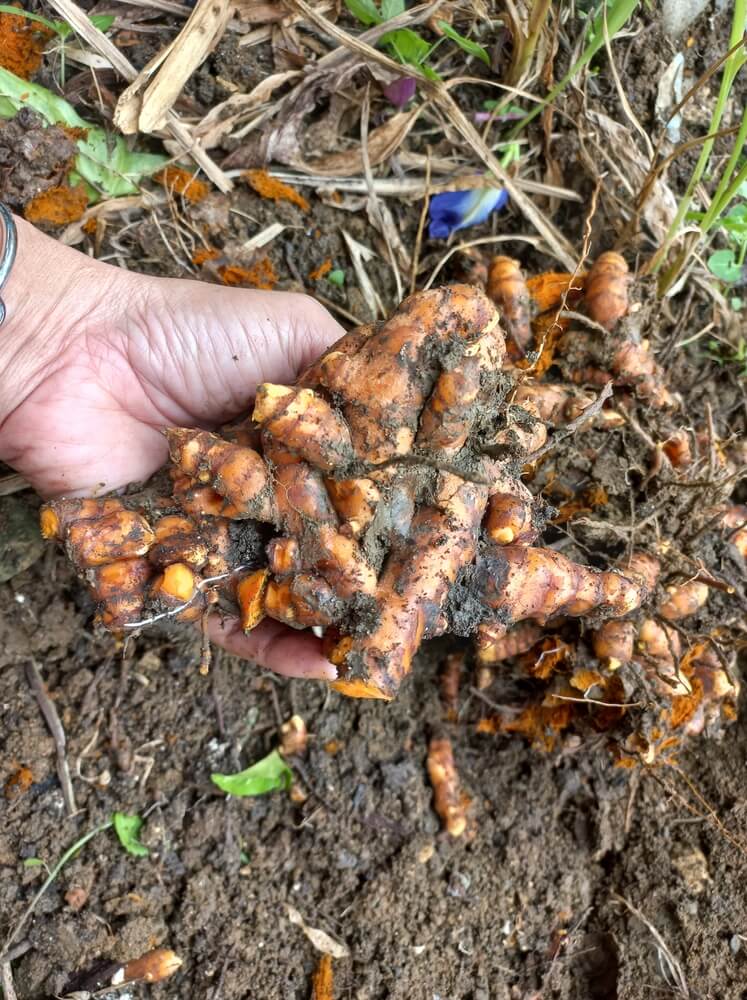
Like ginger’s golden cousin, turmeric roots easily from grocery store rhizomes. It’s a powerhouse anti-inflammatory and a beautiful ornamental with tropical foliage. Plant in spring, harvest in fall, and save a few rhizomes to replant. Your garden becomes your medicine cabinet.
- USDA Growth Zones: 8 through 12 (or grow in containers).
- Cloning Tip: Plant rhizome sections 2 inches deep in rich, well-draining soil with partial shade to full sun. Keep the soil consistently moist.
- Benefits: Fresh turmeric root for cooking and natural remedies, potent anti-inflammatory, and striking tropical aesthetic.
The fresh rhizomes stain your hands a brilliant saffron-yellow when you harvest them, a temporary tattoo that reminds you for days that you’re growing your own pharmacy in the backyard.
Read More – How To Grow Blueberry Shrubs At Home From Seeds, Cuttings, Or Seedlings – The Ultimate Guide!
4. Sweet Potato (Ipomoea batatas)
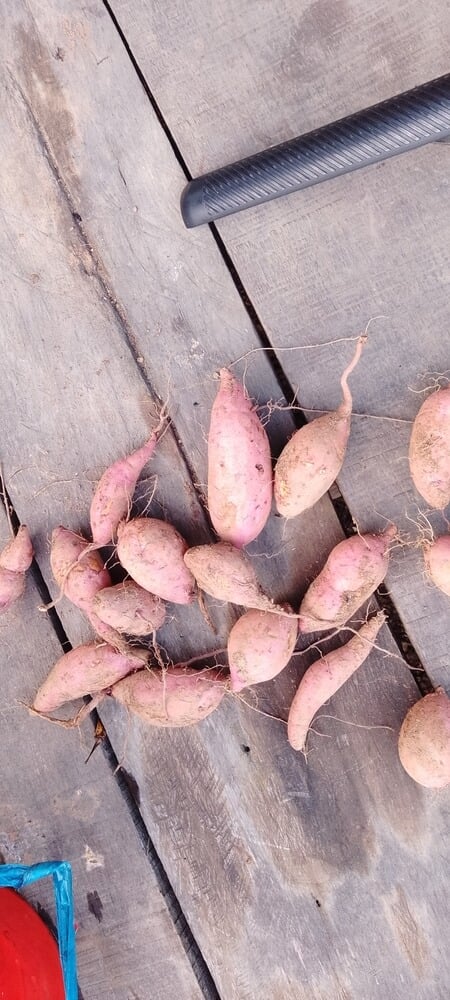
Sweet potatoes are the comeback kids of the garden. Suspend one in water, watch the slips grow, then twist them off and plant. Each slip becomes a sprawling vine that produces multiple tubers. One sweet potato can give you 50+ slips (that’s a winter’s worth of food from a single “scrap”).
- USDA Growth Zones: 8 through 11 (or grow as annual elsewhere).
- Cloning Tip: Suspend a sweet potato in water until slips sprout, then twist off 6-inch slips and root in water before planting in full sun.
- Benefits: High-yield food crop, nutritious and storable tubers, edible leaves, and attractive ornamental vines.
Veteran homesteaders know the secret: grow your slips in late winter, plant them out after frost, and by October you’ll be pulling tubers the size of footballs from ground that looked like nothing but leafy chaos all summer.
5. Lemongrass (Cymbopogon citratus)
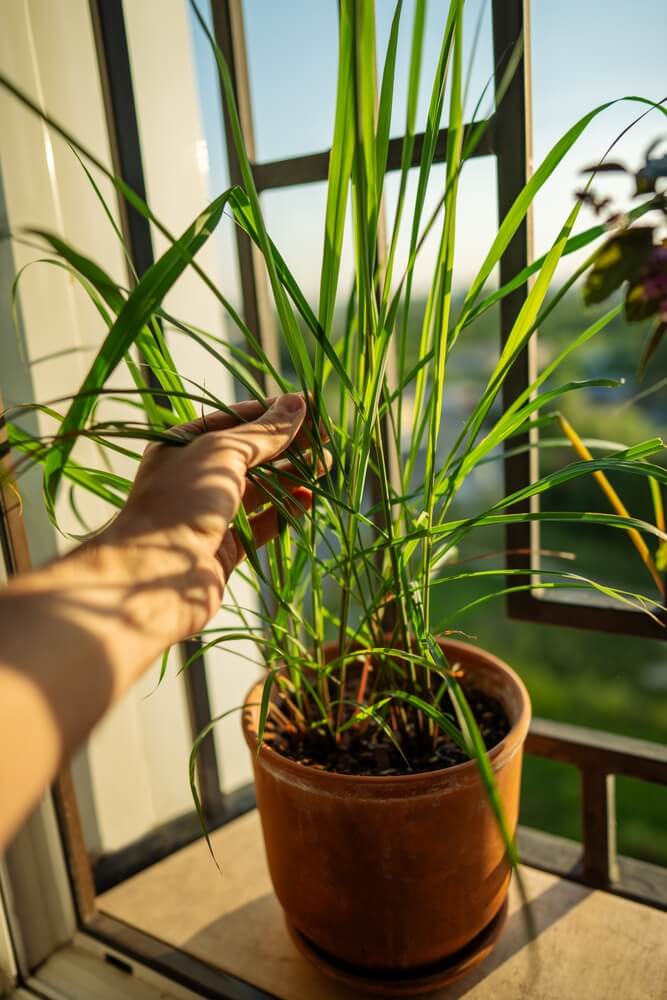
Stick grocery store lemongrass stalks in water, and they’ll root in two weeks. This tropical herb thrives in the sun, repels mosquitoes, and adds flavor to everything from tea to curry. Divide your clumps every year, and you’ll have enough to share (or sell at the farmers market).
- USDA Growth Zones: 9 through 11 (or grow in containers and overwinter indoors).
- Cloning Tip: Place fresh lemongrass stalks in water until roots develop, then plant in full sun with well-draining, moist soil.
- Benefits: Culinary herb for teas and Asian cuisine, natural mosquito repellent, and aromatic citrus scent.
Plant lemongrass around your patio seating area, and the whole space becomes infused with a lemony perfume when the breeze stirs. Guests always ask what that wonderful scent is, never suspecting it’s just the scent of grass.
Part II. The Free Trimmings – Herbs & Edibles From Cuttings
These perennial herbs root so easily from stems that you should never buy them as starts. Just snip, root, and plant.
6. Mint (Mentha spp.)
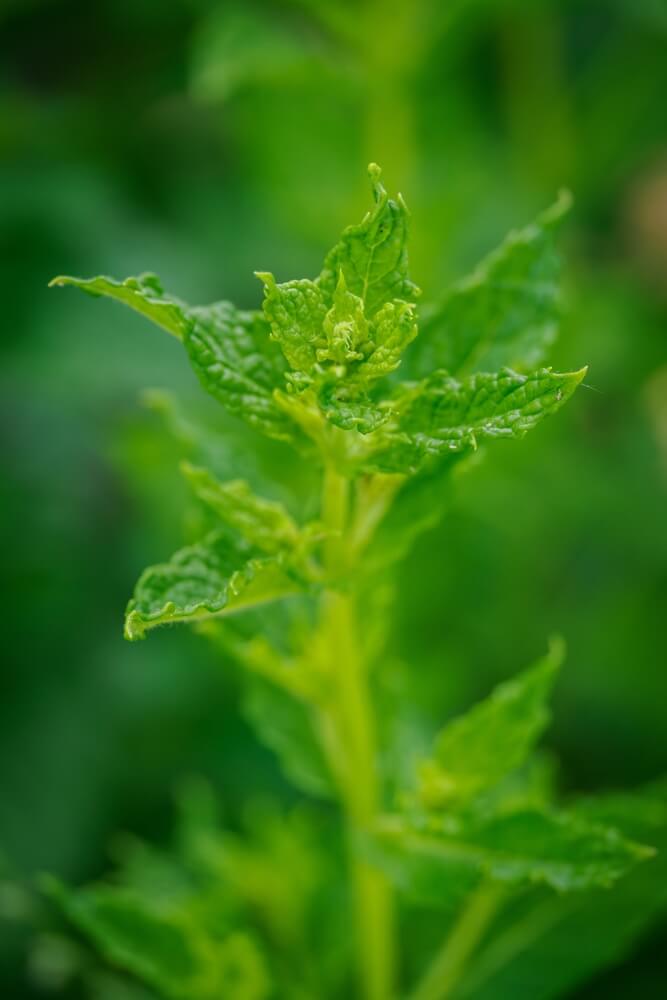
Mint is basically a weed, and that’s a compliment. A single stem in water will root in days and spread like wildfire in the garden. It’s a homesteader’s best friend for teas, mojitos, and keeping rodents at bay. Grow it in pots unless you want a mint empire.
- USDA Growth Zones: 3 through 11 (varies by species).
- Cloning Tip: Place 4 to 6-inch stem cuttings in water until roots form. Then, plant it in moist soil with partial shade to full sun.
- Benefits: Versatile culinary and medicinal herb, refreshing teas, natural pest deterrent, and attracts beneficial pollinators.
Mint is the plant that teaches new gardeners about abundance. Within two seasons, you’ll go from carefully nurturing a single stem to desperately trying to give away grocery bags full of it to anyone who’ll take them.
Read More – 21 Low-Maintenance Xeriscaping Plants For Stunning, Water-Wise Gardens!
7. Basil (Ocimum basilicum)
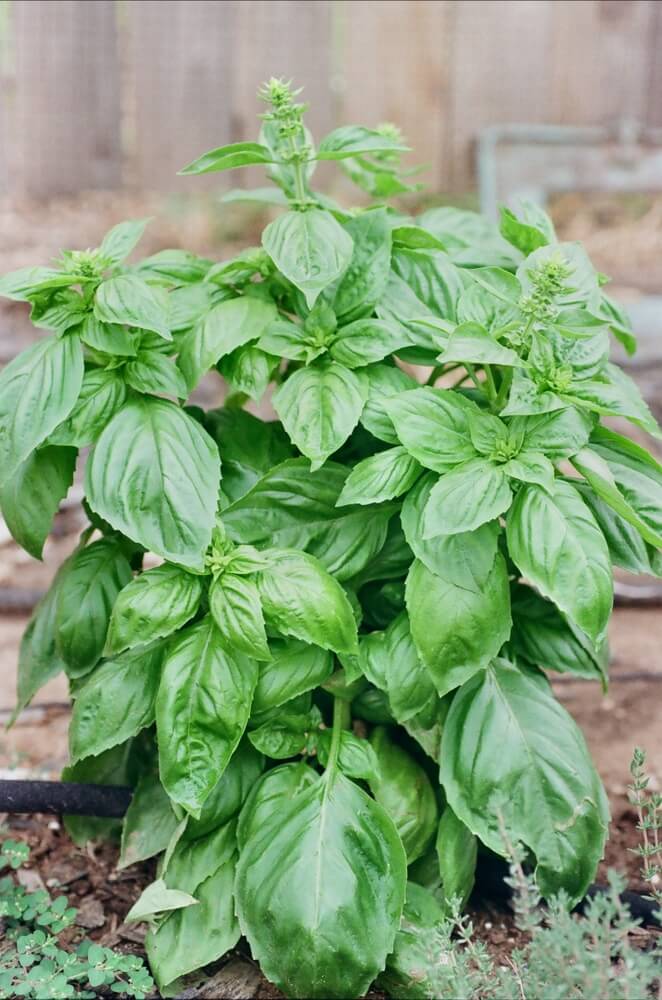
While technically an annual in most climates, basil behaves like a perennial in warm regions and indoors. Cuttings root in water faster than you can say “pesto.” Keep snipping and rooting all summer, and you’ll have an endless supply of fresh basil for pennies.
- USDA Growth Zones: 10 through 11 as perennial (grown as annual elsewhere).
- Cloning Tip: Take 4-inch stem cuttings just below a basil leaf node. Remove lower leaves. Then, place the seed in water until the roots develop.
- Benefits: An essential culinary herb for Italian cooking, it is easily preserved by freezing or drying. Attracts pollinators.
Keep a row of rooted basil cuttings on your kitchen windowsill through winter. That way, you’ll have plenty of yummy leaves, fresh from your backyard pizza garden.
8. Rosemary (Salvia rosmarinus)
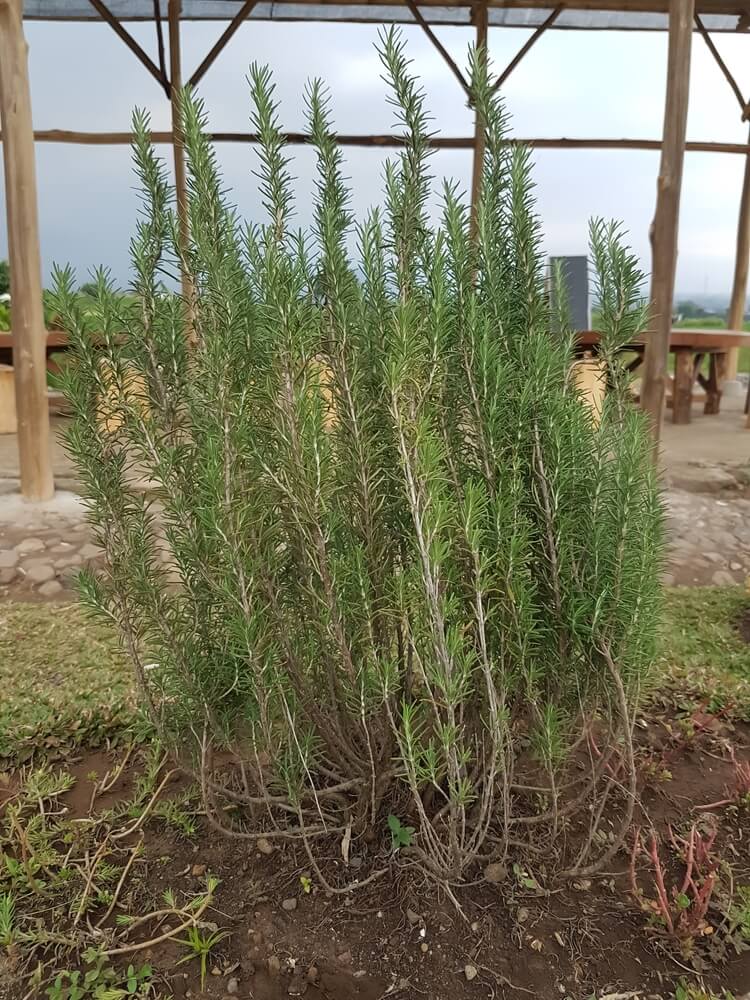
Rosemary cuttings take a few weeks. But once they root, you’ve got a woody, drought-tolerant herb that lives for years. Rosemary is prized by herbalists, chefs, and beekeepers. One plant can easily supply your whole homestead.
- USDA Growth Zones: 7 through 11 (needs protection in colder zones).
- Cloning Tip: Take 4 to 6-inch cuttings from new growth. Strip the lower leaves. Dip them in rooting hormone. Then plant in well-draining soil.
- Benefits: Culinary staple for roasting and seasoning, medicinal herb for memory and circulation, and excellent bee plant.
Old Mediterranean folklore claims that rosemary grows best for households where the woman is the head of the family, but really, it just thrives when someone cares enough to give it poor soil, full sun, and benign neglect.
9. Oregano (Origanum vulgare)
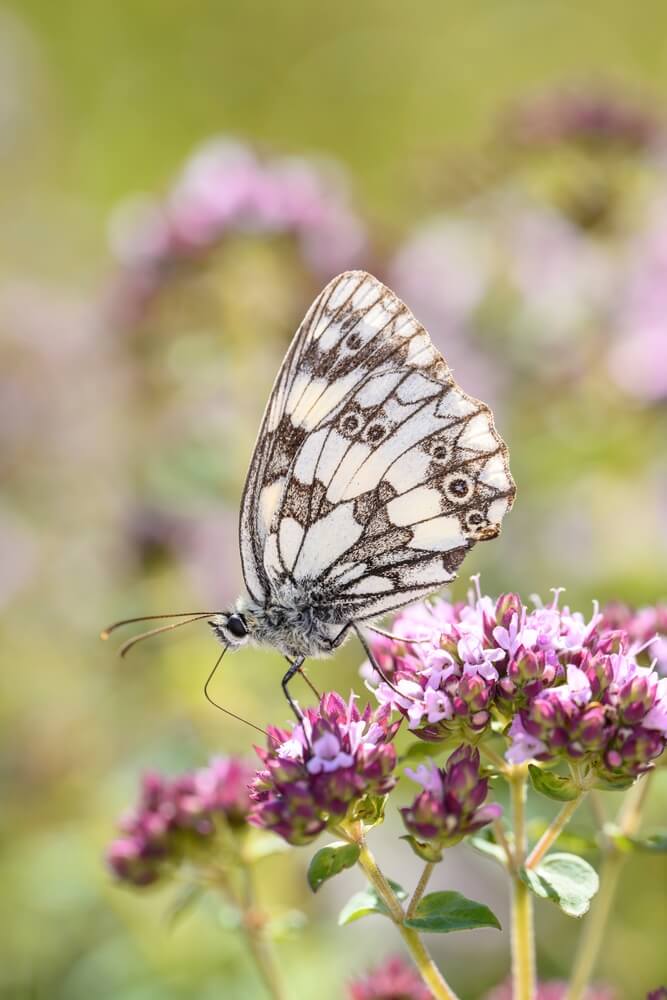
This pizza-perfect herb roots from cuttings like a dream and spreads via runners. Oregano is tough as nails, too. And it’s drought-resistant. It also blooms with bee-friendly flowers. One plant becomes many, making it a staple for food preservation and natural medicine.
- USDA Growth Zones: 4 through 10.
- Cloning Tip: Take 3 to 5-inch stem cuttings in the spring or summer. Then remove the lower oregano leaves. Next, root them in water or moist soil.
- Benefits: Essential culinary herb for Italian and Mediterranean cooking, antimicrobial properties, and attracts bees and butterflies.
Greek oregano (Origanum vulgare hirtum) is the variety that gives pizza its distinctive flavor. Once you grow the real thing, you’ll realize that most dried “oregano” in stores is actually marjoram, and you’ve been living a lie.
Read More – How To Grow Gorgeous Japanese Maple Trees From Seed In Your Home Garden – The Ultimate Guide!
10. Thyme (Thymus vulgaris)
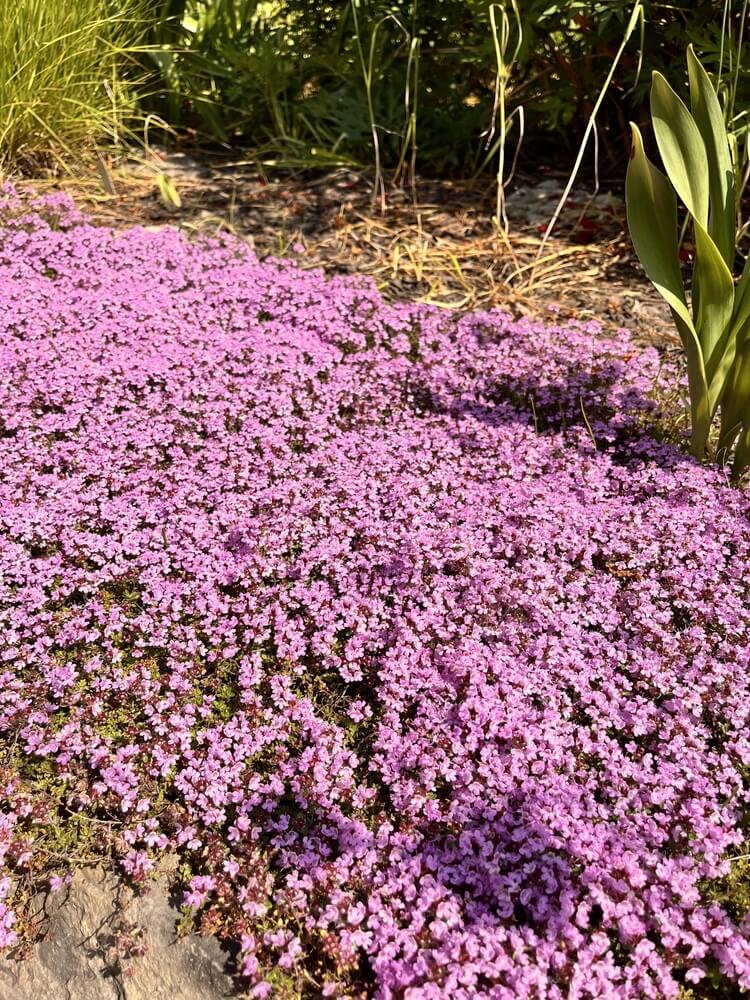
Thyme is an easy-to-grow ground cover that can be propagated from cuttings or layering. It’s a culinary powerhouse, antimicrobial herb, and pollinator magnet. Divide it every few years or snip stems to share. Thyme literally multiplies itself if you let it sprawl.
- USDA Growth Zones: 5 through 9.
- Cloning Tip: Take 3 to 4-inch cuttings from new growth, strip the lower leaves, and root them in moist, well-draining soil or water.
- Benefits: Versatile culinary herb. Natural antimicrobial and cough remedy. Drought-tolerant ground cover. It also attracts bees.
Plant creeping thyme between stepping stones! It turns your garden path into a sensory experience.
11. Sage (Salvia officinalis)
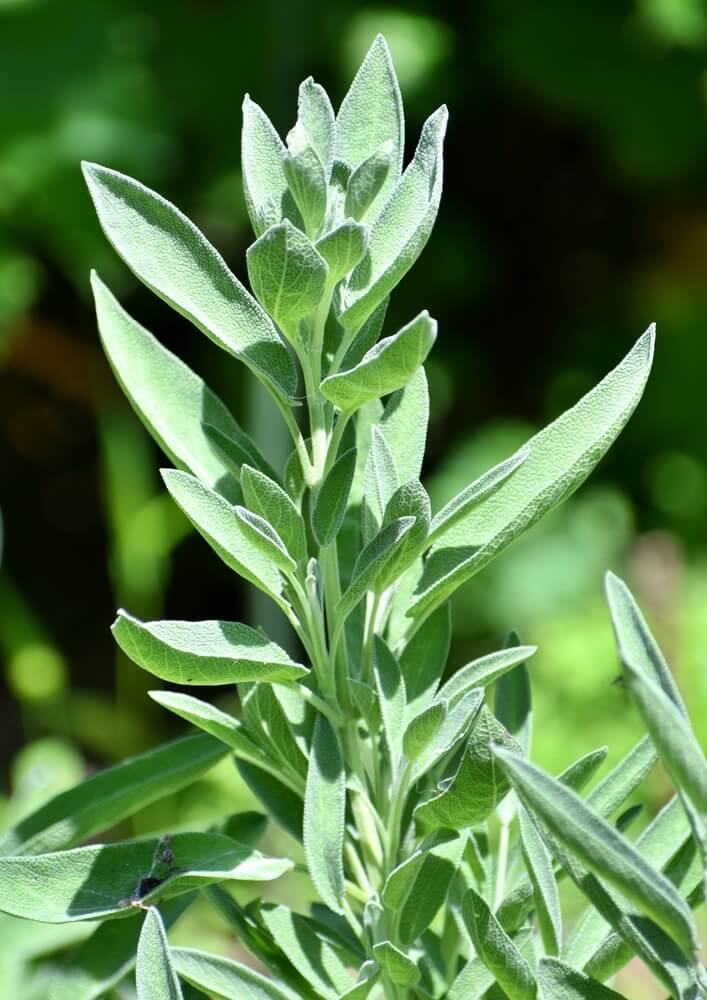
Woody sage cuttings root slowly but reliably. It’s also an excellent herb for poultry seasoning, natural remedies, and spiritual smudging. Once established, sage is nearly indestructible and lives for years, making it a worthy investment of your propagation time.
- USDA Growth Zones: 5 through 9.
- Cloning Tip: Take 4 to 6-inch cuttings from semi-woody stems in the spring, remove the lower leaves, and root them in well-draining soil.
- Benefits: Culinary staple for savory dishes, medicinal herb for sore throats and digestion, and attracts bees and hummingbirds.
Butterflies, particularly swallowtails and painted ladies, seem to prefer sage flowers over nearly any other bloom.
12. Comfrey (Symphytum officinale)
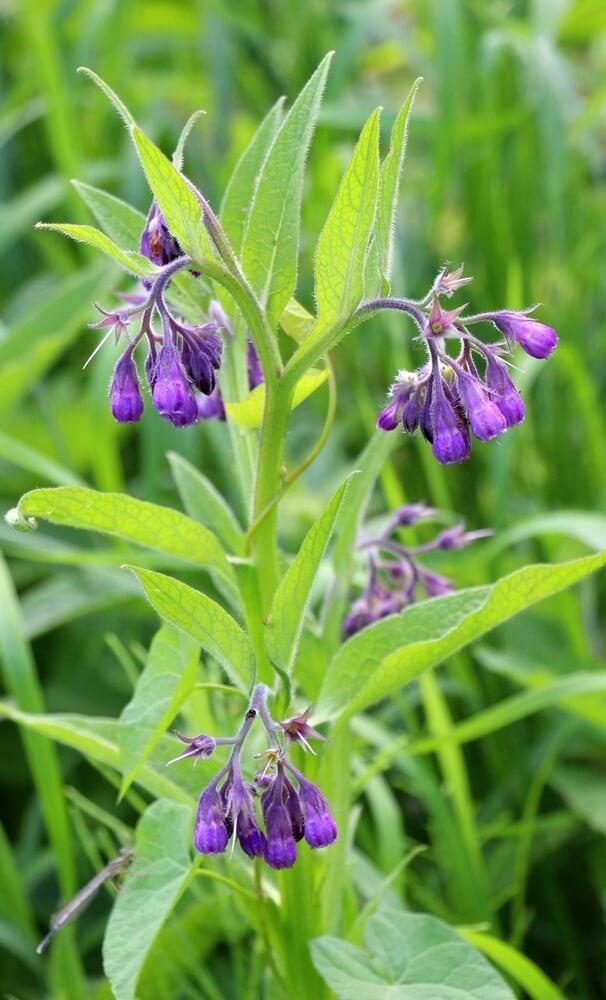
Comfrey’s deep roots mine nutrients. And its leaves make incredible compost activators. Its root cuttings also produce new plants effortlessly. Slice a root into 2-inch sections, plant horizontally, and watch your comfrey patch explode. Just be warned: it’s nearly impossible to eradicate once established.
- USDA Growth Zones: 3 through 9.
- Cloning Tip: Cut roots into 2 to 3-inch sections in the fall or early spring, and plant them horizontally 2 to 4 inches deep in moist soil.
- Benefits: Dynamic accumulator for compost and mulch, traditional wound-healing poultice, livestock fodder, and attracts pollinators.
Permaculture enthusiasts refer to comfrey as “the gift that keeps on giving.” You can harvest the leaves up to five times per season for composting without harming the plant, and each harvest adds nitrogen to your soil, much like a slow-release fertilizer factory.
Read More – 15 Gorgeous Rose Cultivars That Bloom Well Into The Fall And Autumn!
Part III. The Landscape Clones – Ornamentals From Cuttings & Division
These are the gorgeous perennials you can clone from cuttings.
13. Hydrangea (Hydrangea spp.)
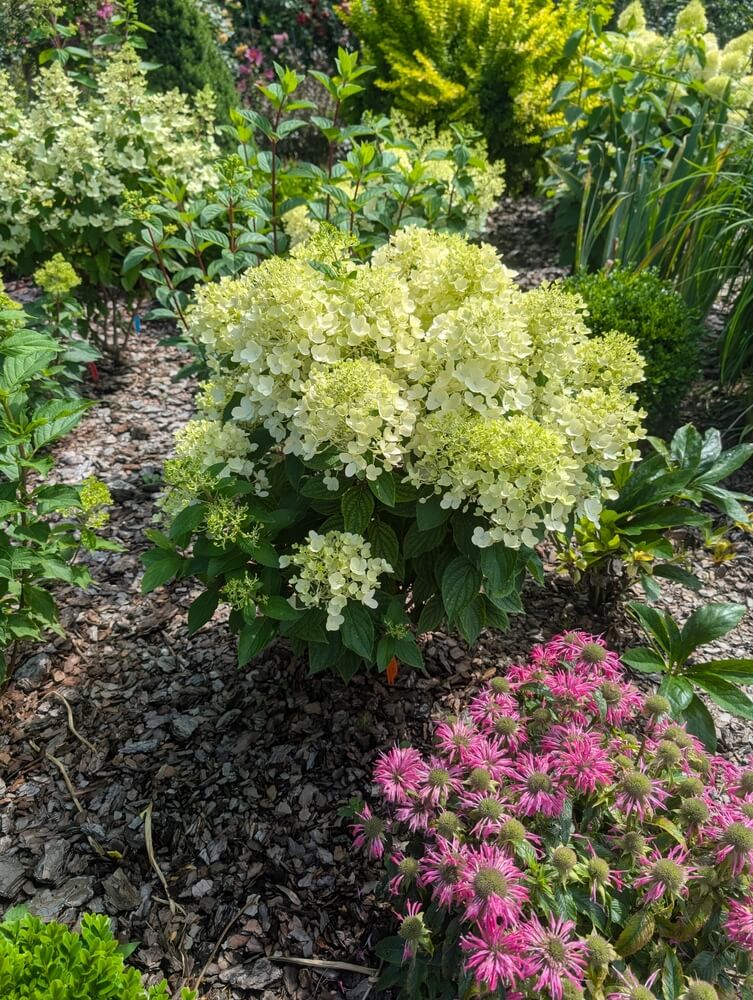
Hydrangeas root beautifully from softwood cuttings in early summer. Strip the lower leaves, dip them in rooting hormone (or skip this step, as they’re that easy), and keep them moist. One plant can become dozens, turning your yard into a cottage garden dreamscape without the sticker shock.
- USDA Growth Zones: 3 through 9 (varies by species).
- Cloning Tip: Take 5 to 6-inch softwood cuttings in early summer. Then, remove the lower leaves and flowers of the hydrangea. Then root them in moist potting mix.
- Benefits: Stunning ornamental shrubs, long-lasting cut flowers, pH-sensitive blooms create garden interest, and relatively low maintenance.
Hydrangeas have a secret superpower: you can change the color of some varieties by adjusting soil pH. Add sulfur for blue blooms, lime for pink, turning your garden into a living chemistry experiment that actually looks beautiful.
14. Sedum (Stonecrop, Hylotelephium spp.)
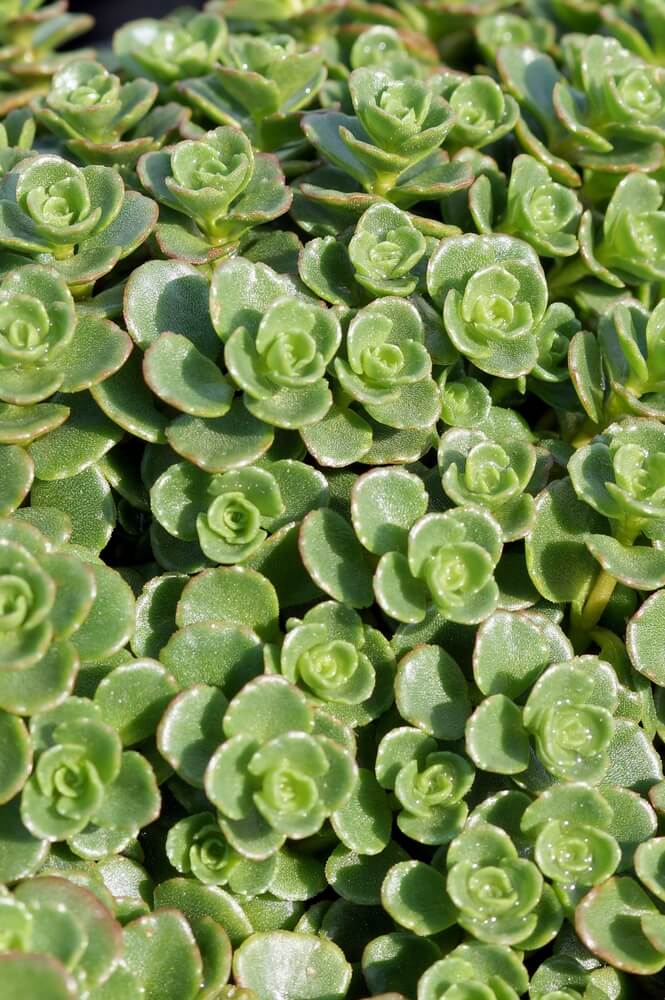
Sedum is laugh-out-loud easy to propagate. Break off a stem, stick it in soil, and it roots. These drought-tolerant succulents fill garden gaps, attract butterflies, and require zero fuss. They’re the ultimate “set it and forget it” perennial for lazy homesteaders (we mean that lovingly).
- USDA Growth Zones: 3 through 9 (varies by species).
- Cloning Tip: Break off stem or leaf cuttings, let them callous for a day, then lay them on or stick them into well-draining soil.
- Benefits: Drought-tolerant and low-maintenance, attracts butterflies and bees, excellent for rock gardens and green roofs.
Sedum ‘Autumn Joy’ is beloved by monarch butterflies during their fall migration. A mature clump in September becomes a literal rest stop, covered in dozens of orange wings refueling for their journey to Mexico.
15. Geranium (Pelargonium spp. or Geranium spp.)
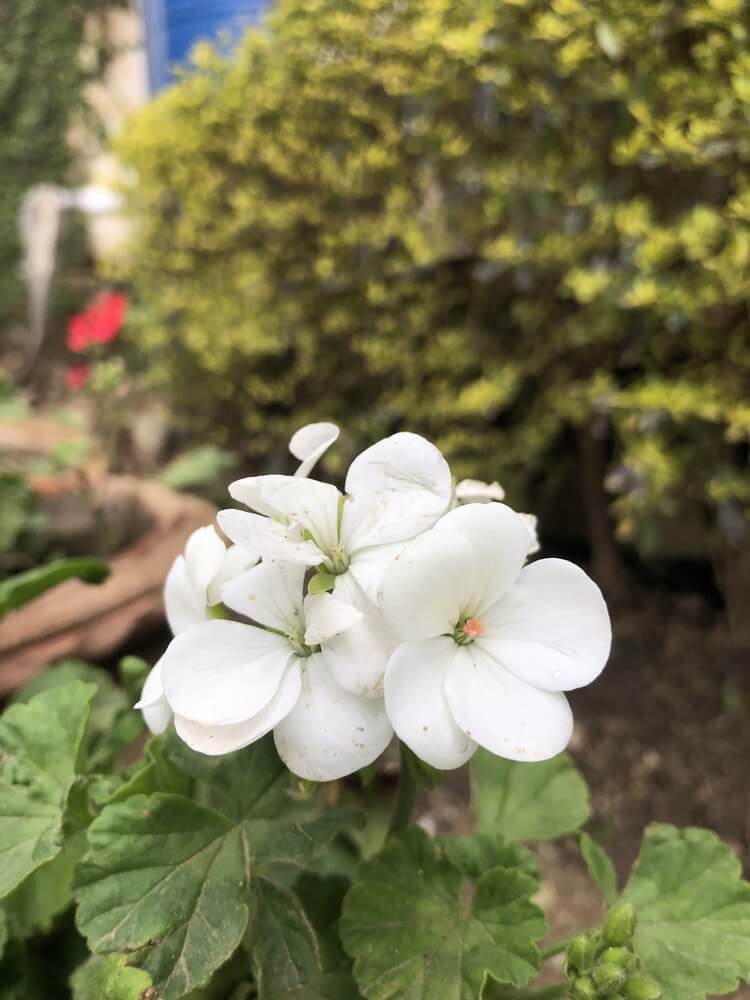
Both hardy geraniums and the tender “zonal” types root from cuttings. Snip 4 to 6-inch stems, remove lower leaves, and plant in well-draining soil. Geraniums bloom prolifically, deter pests with their scent, and overwinter indoors easily. One plant becomes your whole porch display.
- USDA Growth Zones: 3 through 9 for hardy geraniums; 9 through 11 for tender types (or grow as annuals).
- Cloning Tip: Take 4 to 6-inch stem cuttings, remove the lower leaves and flowers, let the cut end dry briefly, and then root them in potting soil.
- Benefits: Long-blooming ornamental, natural pest deterrent with scented leaves, easy to overwinter indoors, and edible flowers.
Victorian ladies would tuck scented geranium leaves (such as rose, lemon, and nutmeg varieties) into their gloves and pockets as a natural perfume. It’s a tradition worth reviving for anyone who appreciates fragrance without chemicals.
Read More – How To Grow Epic Fig Trees From Seeds Or Cuttings – The Ultimate Guide!
16. Catmint (Nepeta spp.)
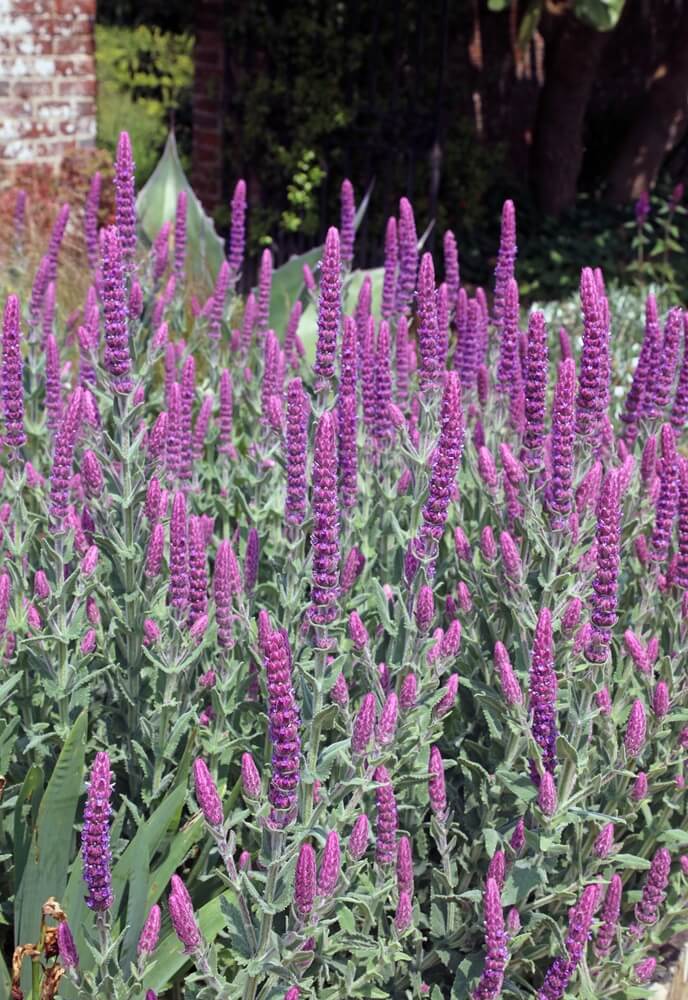
Catmint cuttings root quickly, and the plant also spreads via division. This lavender look-alike is more drought-tolerant, longer-blooming, and nearly pest-proof. Bees go wild for it, and your cats might too. Divide every 2 to 3 years and you’ll have armloads to share.
- USDA Growth Zones: 3 through 8.
- Cloning Tip: Take 4 to 5-inch stem cuttings in the spring. Then, root your catmint cuttings in water or moist soil, or divide mature clumps to propagate the plant.
- Benefits: The extended bloom period attracts a wide range of pollinators, including bees and butterflies. It is drought-tolerant once established. Also resistant to deer and rabbits, and cat-friendly.
Catnip sends felines into euphoria. But catmint (its milder cousin) only makes them pleasantly drowsy. Plant it near your outdoor seating, and the neighborhood cats will claim your garden as their favorite napping spot, providing free entertainment.
17. Lavender (Lavandula spp.)
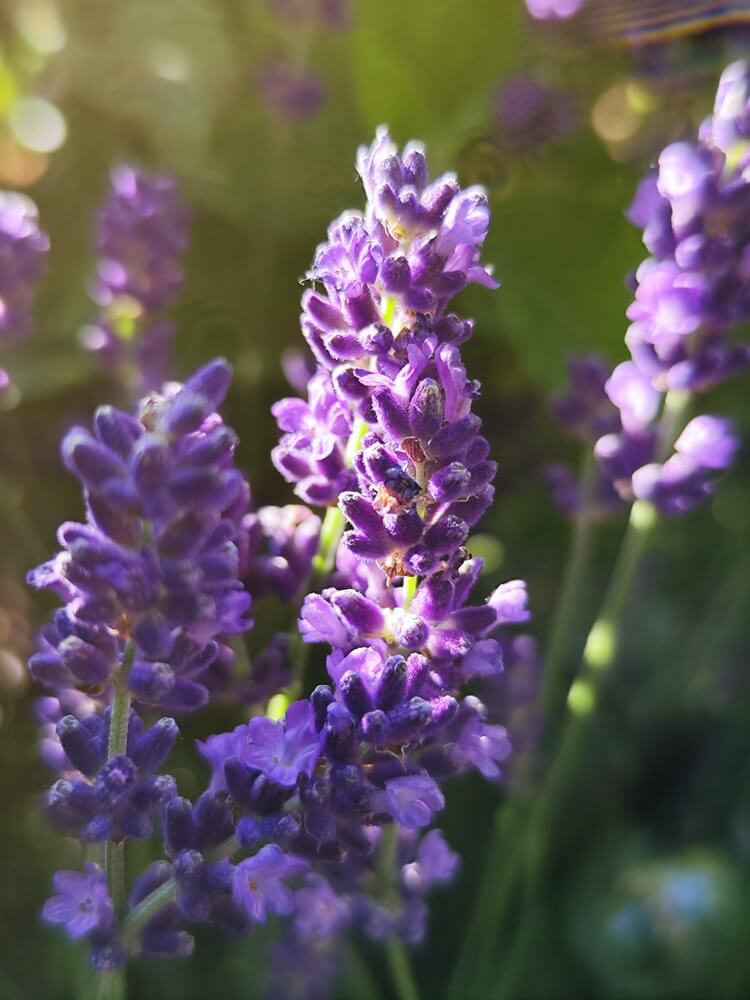
Lavender takes patience! Cuttings need 4 to 6 weeks. But the payoff is enormous. This Mediterranean herb is prized for its use in sachets, soaps, and teas, as well as its calming scent. One mother plant can produce 20 or more rooted cuttings per season, saving you hundreds compared to the prices at nurseries.
- USDA Growth Zones: 5 through 9 (varies by species).
- Cloning Tip: Take 3 to 4-inch cuttings from non-flowering stems in the spring, remove the lower leaves, and root them in well-draining soil with bottom heat.
- Benefits: Culinary and medicinal herb, essential oil production, attracts pollinators, calming aromatherapy, and is resistant.
French lavender farmers harvest at dawn when the essential oils are most concentrated. Even on a small homestead scale, cutting your lavender in early morning yields the most intensely fragrant dried bundles for winter sachets and teas.
18. Fuchsia (Fuchsia spp.)
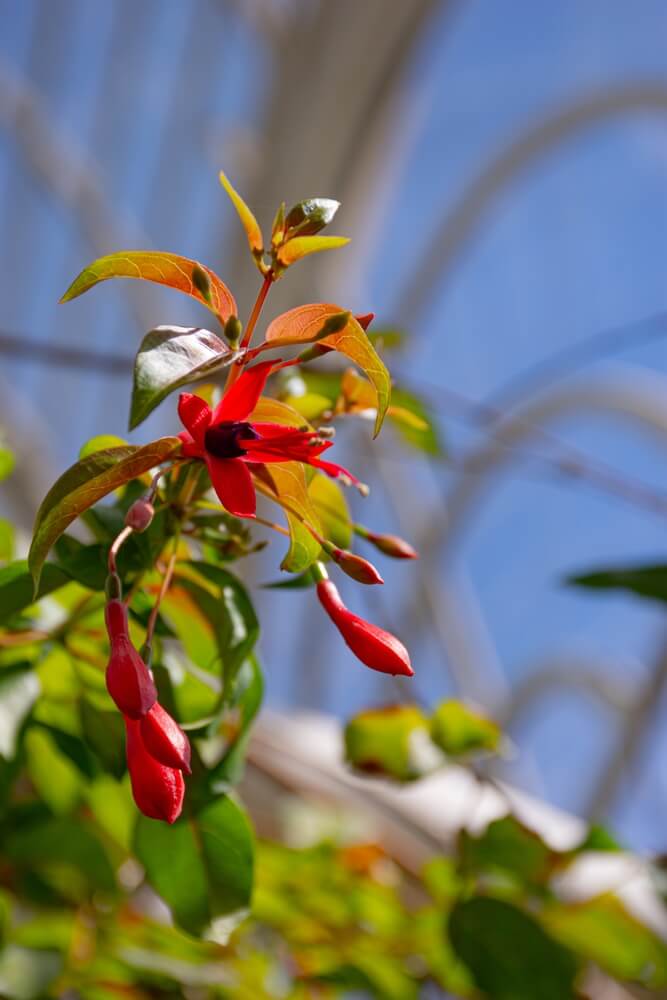
Fuchsias root from softwood cuttings with ease, making them perfect for multiplying your shade garden. Their pendulous blooms attract hummingbirds, and cuttings taken in spring establish quickly. Overwinter indoors in cold climates, then propagate again come spring. It’s a perpetual cycle of free plants.
- USDA Growth Zones: 6 through 11 (varies by species; often grown as annuals in colder zones).
- Cloning Tip: Take 3 to 4-inch softwood cuttings in the spring or summer. Remove the fuchsia’s lower leaves. Then root them in moist potting mix with high humidity.
- Benefits: Attracts hummingbirds and bees, thrives in shade, is a beautiful hanging basket plant, and is easy to overwinter indoors.
Hummingbirds have such strong site fidelity that if you hang a fuchsia basket in the same spot each spring, the same birds (or their offspring) will return within days of your planting it, as if they’ve been waiting all winter for your garden to reopen.
Read More – 21 Epic Shrubs To Plant In Fall For Gorgeous Garden Color And Variety!
19. Penstemon (Beard Tongue, Penstemon spp.)
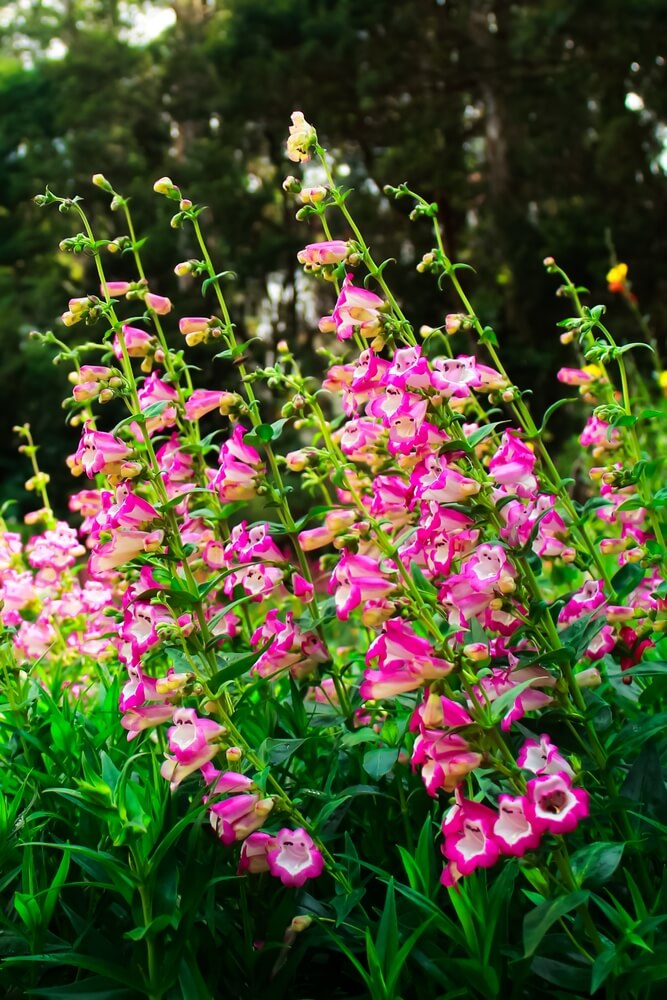
Native penstemon species root readily from cuttings or divide easily. These tubular flowers are hummingbird magnets and thrive in neglectful conditions. Perfect for low-input homesteads. Once you establish one, you can fill entire borders with divisions and cuttings.
- USDA Growth Zones: 3 through 9 (varies widely by species).
- Cloning Tip: Take 3 to 5-inch stem cuttings in late spring. Then remove the lower leaves. Next, root them in sandy, well-draining soil. Or divide them in the spring.
- Benefits: Native plant that supports native bees and hummingbirds, drought-tolerant once established, deer resistant, and has a long blooming period.
Native penstemons are the unsung heroes of pollinator gardens. While everyone obsesses over milkweed for monarchs, penstemon quietly feeds over 30 species of native bees that most gardeners never even notice, including adorable fuzzy mining bees.
20. Dianthus (Pinks, Dianthus spp.)
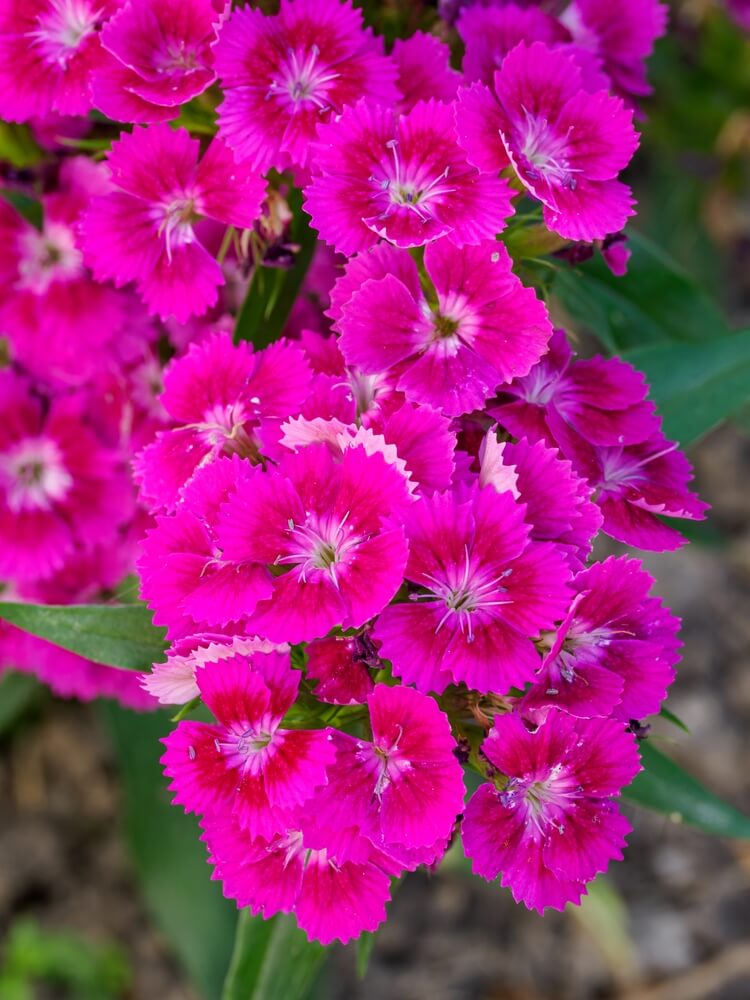
Dianthus “pinks” root from cuttings or by layering their sprawling stems. These cottage garden classics have a clove-like scent, thrive in poor soil, and bloom profusely. One plant becomes a fragrant carpet in just a season or two. No garden center required.
- USDA Growth Zones: 3 through 9 (varies by species).
- Cloning Tip: Take 3 to 4-inch cuttings from non-flowering shoots in the summer, remove the lower leaves, and root them in sandy, well-draining soil.
- Benefits: Clove-scented blooms for cutting, attracts butterflies, deer resistant, tolerates poor soil, and makes an excellent edging plant.
Dianthus flowers are completely edible with a sweet, clove-like flavor. Tudor cooks used them to flavor wine and ales, and modern mixologists are rediscovering them as spectacular cocktail garnishes that smell as good as they taste.
21. Daylily (Hemerocallis spp.)
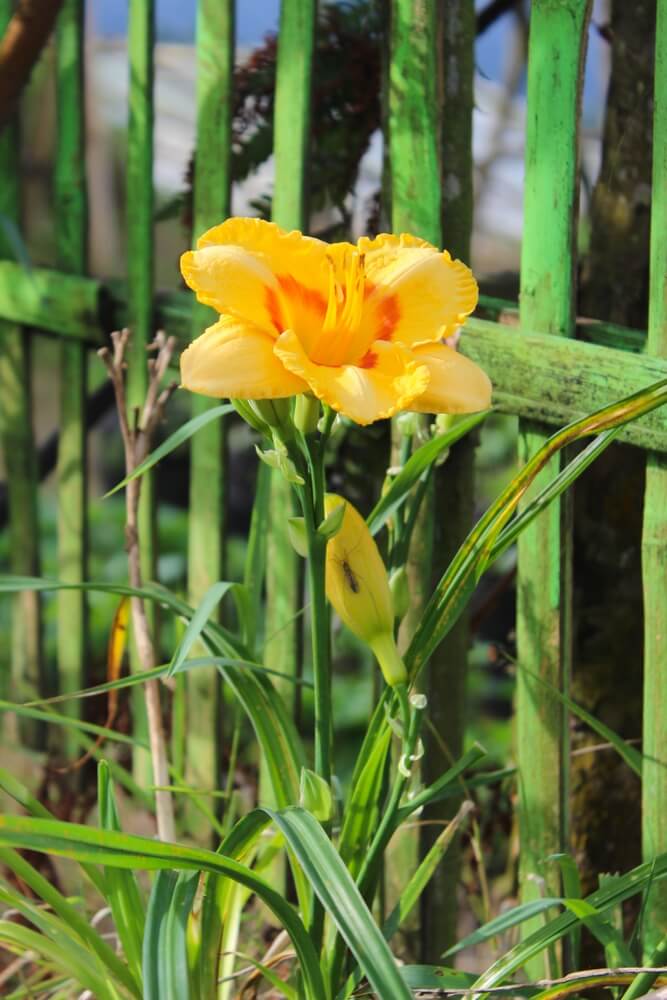
Daylilies are division superstars. Every 3 to 4 years, dig up a clump, pull apart the fans, and replant. Each division blooms that same summer. They’re edible (both the flowers and the tubers!).
- USDA Growth Zones: 3 through 10.
- Cloning Tip: Divide clumps in early spring or fall by pulling apart individual fans with roots attached and replanting immediately.
- Benefits: Edible flowers and tubers, extremely low maintenance, drought-tolerant once established, naturalizes readily, and provides months of blooms.
Another perk of daylilies is that they’re super tough. And they multiply so fast you’ll be giving them away by the armload.
Read More – 25 Fun Ways To Turn Your Backyard Into A Private And Peaceful Paradise – Without Going Full Hermit!
Conclusion
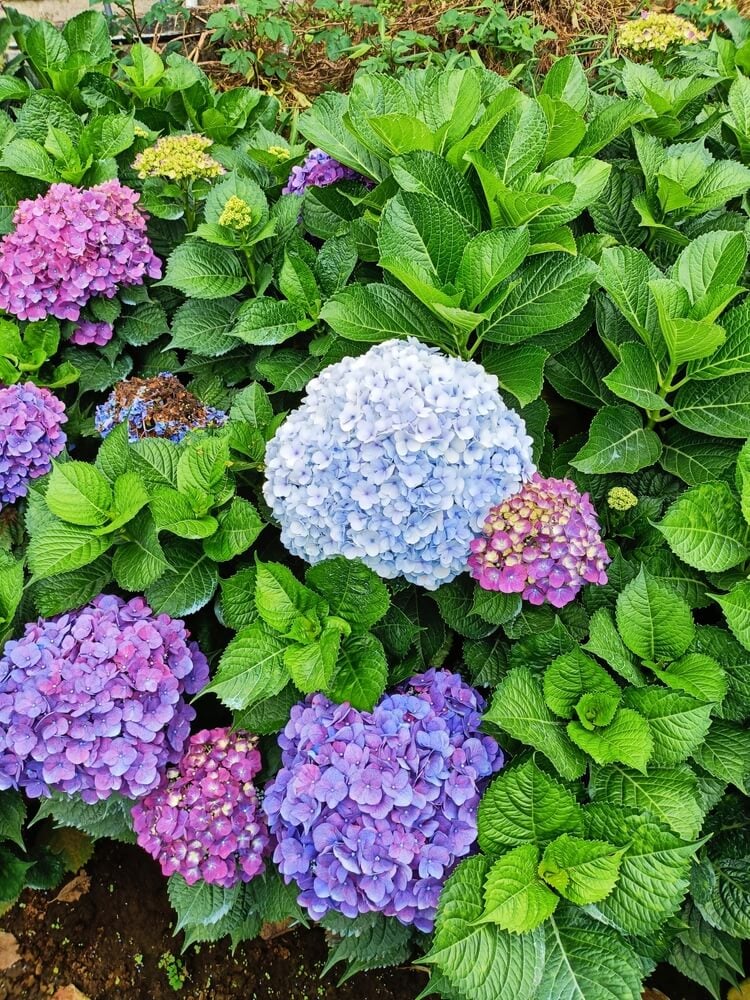
These 21 perennials are your ticket to a thriving, productive garden that costs almost nothing to establish. Start with what you have (a grocery store ginger, a neighbor’s mint cutting, a divided daylily) and watch your garden (and your self-reliance) grow exponentially.
What about you?
- Will you plant any new perennials this year?
- What perennial plants will you try growing?
- Will you grow one cultivar? Or try many?
Thanks for reading.
Have a great day!

